Fishing is a beloved pastime, cherished by many. But hasn’t it made you scratch your head over the number of fishing myths floating around? I know I’ve found myself puzzled about these widespread misbeliefs and decided it was high time to reel them in for good.
This article aims to unravel 21 significant fishing tales, replacing them with tried-and-true techniques that will have you outsmarting the fish in no time. Ready to net more catches than ever before? Well then, let’s cast off into this sea of information!
Key Takeaways
- Talking doesn’t scare fish away, so feel free to chat while you fish.
- Big fish can bite small bait too, so don’t limit yourself to using only large bait.
- Fishing in the rain can be great because it stirs up food for fish and makes them more active.
- Bananas on a fishing boat don’t bring bad luck, so enjoy them without worries.
The 4 Most Common Fishing Myths Debunked
In this section, we will debunk four of the most common fishing myths that many anglers believe to be true.
Myth: Talking Scares Fish
You may have heard that talking scares fish away. That’s not true! Fish don’t get scared by your talking or even loud music. Sound does not move well between air and water, so it’s hard for fish to hear us.
So, feel free to chat while you fish because it won’t scare them off!
Myth: Big Fish Only Bite Big Bait
Some people believe big fish only bite big bait. This is not true. The Mississippi Department of Wildlife, Fisheries, and Parks tested this myth. They found out that big fish will bite small bait too.
Using bigger lures does not mean you catch bigger fish. Fish look at more than just size when picking their food. They think about how the bait moves and smells too. So, both small and large baits can help you catch a big fish!
Myth: Avoid Fishing in the Rain
Rain doesn’t stop fish from biting. In fact, some say fishing is better in the rain! This is one big myth I want to debunk for everyone out there. Rain stirs up bugs and other food for fish, making it a great time to cast your line.
The water does cool down in heavy rain, so you might find fish hanging out deeper than normal. Don’t let the weather get you down – grab your gear and enjoy some quality fishing time even when it’s dripping wet outside!
Myth: Bananas Onboard Are Bad!
Some people believe that having bananas onboard a fishing boat brings bad luck. This superstition has been around for centuries and is found in different parts of the world. The belief comes from the idea that bananas are sweet and sticky, which could attract unwanted creatures or cause accidents on the boat.
However, despite this myth being popular among sailors, there is no scientific evidence to support the idea that bananas bring bad luck on fishing trips. So if you enjoy eating bananas, go ahead and bring them along on your fishing adventure without any worries!
Tips for Successful Fishing
Catch more fish by following these essential tips. From fishing at the right time to using the right bait, this section covers everything you need to know for a successful fishing trip.
Don’t miss out!
Early morning fishing
I love going fishing in the early morning. Many people believe that this is the best time to fish because the fish are more active and likely to bite. While it’s true that some fish may be more active during these hours, it doesn’t mean that they won’t bite at other times of the day too.
Fish can bite at any time, depending on factors like water temperature, weather conditions, and their feeding patterns. So don’t limit yourself to just fishing in the morning – you might miss out on some great catches later in the day! Just remember to be patient and observant, no matter what time you’re out there casting your line.
Happy fishing!
Fishing in different weather conditions
Weather conditions play a crucial role in fishing success. Windy conditions can make the water turbid, making it harder for fish to see your bait. Rapid weather fluctuations, where temperatures change quickly, can also affect fish behavior as they constantly have to search for warmer or colder waters.
Light rain, on the other hand, can actually encourage fish to come out from deep water and become more active, providing excellent fishing opportunities. Stable weather is ideal for fishing as it promotes increased fish activity and feeding.
However, when cold fronts move in, fish tend to slow down and become less active. Fish are sensitive to pressure changes and water temperature which can impact their behavior during different weather conditions.
Using the right bait
Choosing the right bait is essential for successful fishing. It can make a big difference in your catch rate. There are two main types of bait: natural and artificial. Natural bait includes things like worms, insects, or small fish, while artificial bait can be made of plastic or metal.
When choosing bait, it’s important to consider factors like matching the hatch, size and color, and location. Matching the hatch means using bait that looks similar to what the fish are naturally eating at that time.
Size and color also matter because different species of fish have different preferences. And finally, considering where you’re fishing is crucial because certain baits work better in specific environments.
Choosing the right hook size
When it comes to fishing, choosing the right hook size is important for successful fishing. The rule of thumb is to base your hook size on the bulk of the soft plastic lure, not its length.
For live minnows and leeches, it’s recommended to use smaller #6 or #4 hooks. If you’re targeting large fish, an Octopus hook with a short shank and wide gap is great for hooking them effectively.
Remember that hook sizes can vary in terms of length, gap, and thickness. It’s also essential to understand the different types of fishing hooks and their sizes. Considering these factors will help you select the appropriate hook size for successful fishing based on your specific bait or lure and ultimately increase your chances of catching more fish!
Understanding fish behavior
Fish behavior plays a crucial role in successful fishing. Fish are creatures of habit and their behaviors are influenced by factors such as habitat, food supply, fishing pressure, recreational boat traffic, and changes in water conditions.
To improve your chances of catching fish, it’s important to understand their basic urges and behavior patterns.
By understanding the depths at which certain species of fish prefer to swim, you can adjust your fishing techniques accordingly. This may involve using different lures or bait at different depths to attract the fish you’re targeting.
Additionally, paying attention to the type of habitat fish prefer can help guide your fishing strategy. Some species may gravitate towards rocky areas or submerged structures while others might be found near vegetation.
Another key factor is the availability of food sources. Different types of fish have varying dietary preferences and will choose locations based on where they can easily find their preferred meals.
Adapting your bait selection to match what the fish are feeding on can greatly increase your chances of success.
Proper line color selection
The color of your fishing line is an important factor in successful fishing. Fish can see different colors, so the visibility of your line can affect whether or not they bite. Some fish may be attracted to certain colors, while others may be deterred by them.
By choosing the right line color, you can increase your chances of attracting fish and improving your fishing success. It’s important to consider factors such as line visibility, fish detection, color differentiation, and even how certain colors might attract or deter fish.
So when selecting your fishing line, keep in mind that proper line color selection plays a big role in determining bite rates and enticing fish to strike.
Safety Tips for Fishing
Stay safe from carbon monoxide while boating and ensure boating safety during a hurricane.
Staying safe from carbon monoxide while boating
As a fishing enthusiast, it’s important to stay safe while out on the water. One potential danger to be aware of is carbon monoxide poisoning from boat engines and appliances. To prevent this, make sure your boat’s fuel-burning engines and appliances are properly installed and maintained.
It’s also crucial to replace marine detectors for carbon monoxide every five years or as directed by the manufacturer. Educate yourself and your passengers about the symptoms of carbon monoxide poisoning, such as headaches, nausea, and confusion.
When swimming or playing around boats, keep away from the exhaust area to avoid exposure to carbon monoxide. Installing approved marine carbon monoxide detectors can provide an extra layer of safety onboard your boat.
Ensuring boating safety during a hurricane
Being prepared for boating during a hurricane is really important. Make sure you have all the necessary safety equipment on your boat. Life jackets, flares, and a first aid kit are must-haves.
Also, before heading out, check the conditions of the waterfront to make sure there aren’t any hazards that could cause problems. And remember, it’s best to avoid consuming alcohol or drugs when operating a boat as it can impair judgment.
Finally, hurricanes can be stressful and emotional events. It’s good to know where you can find resources for support during these times. Stay safe out there!
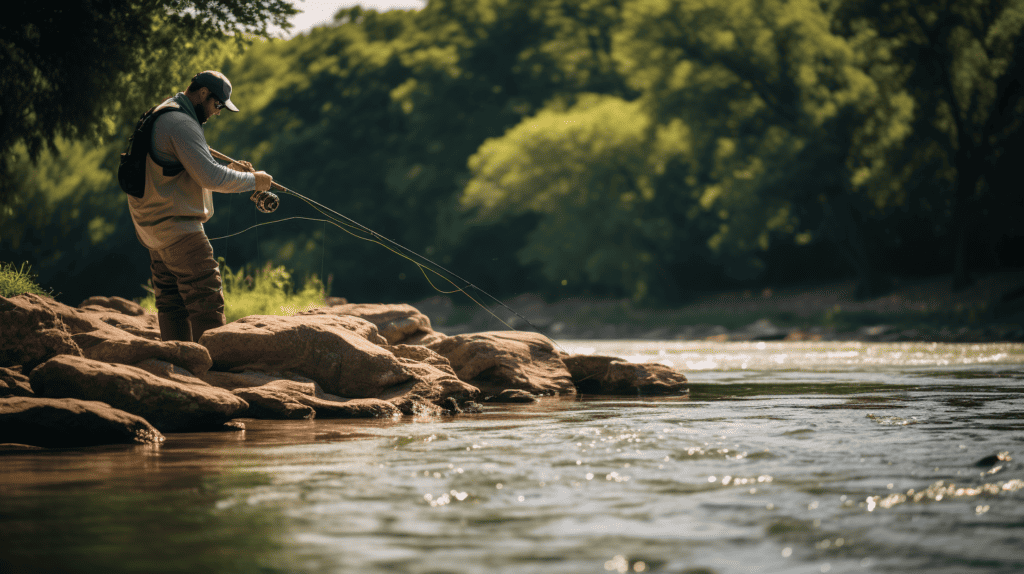
Catch-and-Release Tips
For successful catch-and-release fishing, it’s important to use proper techniques and handle the fish with care to ensure their well-being.
Techniques for safely releasing fish
When it comes to catch-and-release fishing, there are some techniques you can use to ensure the safe release of fish. Using release tools like a dehooker can minimize handling and make it easier to release fish without removing them from the water.
It’s also important to use a large rubber landing net to land fish safely. When releasing the fish, it’s best to do so slowly upstream, giving them a better chance of survival. Avoid squeezing the fish, as this can harm their delicate internal organs.
Lastly, before releasing the fish, you can revive it in clean water to increase its chances of survival. By following these techniques, we can practice ethical angling and help preserve fish populations for future generations.
Handling and preserving fish health
When it comes to handling and preserving fish health, there are a few important things to keep in mind. First, it’s crucial to clean the fish as soon as possible after catching it.
This helps remove any bacteria or parasites that could be harmful to the fish. Additionally, icing the fish or freezing it right away can help preserve its freshness and prevent spoilage.
When practicing catch-and-release fishing, there are specific techniques that can minimize stress on the fish. Wetting your hands before touching the fish and avoiding removing it from the water can help reduce stress levels.
It’s also important to handle the fish gently and quickly release it back into the water.
While catch-and-release fishing is beneficial for conservation efforts, it still puts pressure on fish populations. That’s why managing fishing gear is considered a best practice for preserving these populations.
Properly maintaining equipment helps ensure that only target species are caught and reduces unintentional harm to other marine life.
New Innovations in Fishing Gear
In this section, we will explore the exciting new innovations in fishing gear, including reviews of top-quality reels and rods from Shimano.
The importance of using quality fishing equipment
Using high-quality fishing equipment is essential for a successful and enjoyable fishing experience. When you have the right gear, it can greatly enhance your chances of catching fish.
With advancements in fishing gear, there are now innovative tools that make fishing easier and more efficient. It’s important to choose the right fishing rod for the type of fish you want to catch because different gear is designed to target specific species.
By using quality equipment, you increase your chances of success and have a better overall experience on the water.
Review of Shimano TLD30IIA 2-Speed Lever Drag Reel
I recently had the opportunity to try out the Shimano TLD30IIA 2-Speed Lever Drag Reel, and I was extremely impressed with its performance. This reel features a gear ratio of 4.0:1 in high speed and 1.7:1 in low speed, allowing for versatile use in different fishing situations.
The line per handle turn is 37 inches in high speed and 16 inches in low speed, providing excellent retrieval rates. With a mono capacity of 20/800, 30/600, 40/450, and 50/350 (pound test/yard), this reel can handle various line strengths.
One standout feature of the TLD30IIA is its lever drag system, which allows for easy adjustments during fights with fish. This feature proved to be particularly useful when I hooked onto larger game fish that put up a strong fight.
The reel’s smooth operation was also enhanced by the four A-RB bearings it is equipped with.
Review of Shimano TAC10II Talica 2-Speed Lever Drag Reel
I recently had the opportunity to try out the Shimano TAC10II Talica 2-Speed Lever Drag Reel, and I must say, it exceeded my expectations. This reel has a comfortable and refined lever drag that feels solid in your hand.
Not only does it look sleek with its smart design, but it also performs at a top-end level. The reel is ultra-smooth and a pleasure to use for fishing. With a gear ratio of 6.2:1 in high speed and 4.1:1 in low speed, you can easily adjust your retrieval speed based on the conditions or fish you’re targeting.
While this reel comes with a higher price tag, it’s worth every penny for its performance and quality construction. Whether you’re an experienced angler or just starting out, the Shimano TAC10II Talica 2-Speed Lever Drag Reel is definitely one to consider adding to your fishing gear collection.
Review of Shimano Sojourn Conventional Rod
I recently got the chance to try out the Shimano Sojourn Conventional Rod, and I have to say, it’s a great addition to any fishing gear collection. The rod is built using advanced technologies developed by SHIMANO, which ensures its construction is top-notch.
This is important because a well-constructed rod can greatly impact your overall fishing success.
One of the things that stood out to me about the Sojourn Conventional Rod is its custom look. It has a sleek design that gives it an eye-catching appearance. But it’s not all about looks – this rod also has performance features that make it stand out from the crowd.
The cork reargrip on this rod provides an enhanced grip and makes it incredibly comfortable to hold for extended periods. This is especially important when you’re spending hours casting and reeling in fish.
With the Sojourn Conventional Rod, you won’t have to worry about your hand getting tired or uncomfortable.
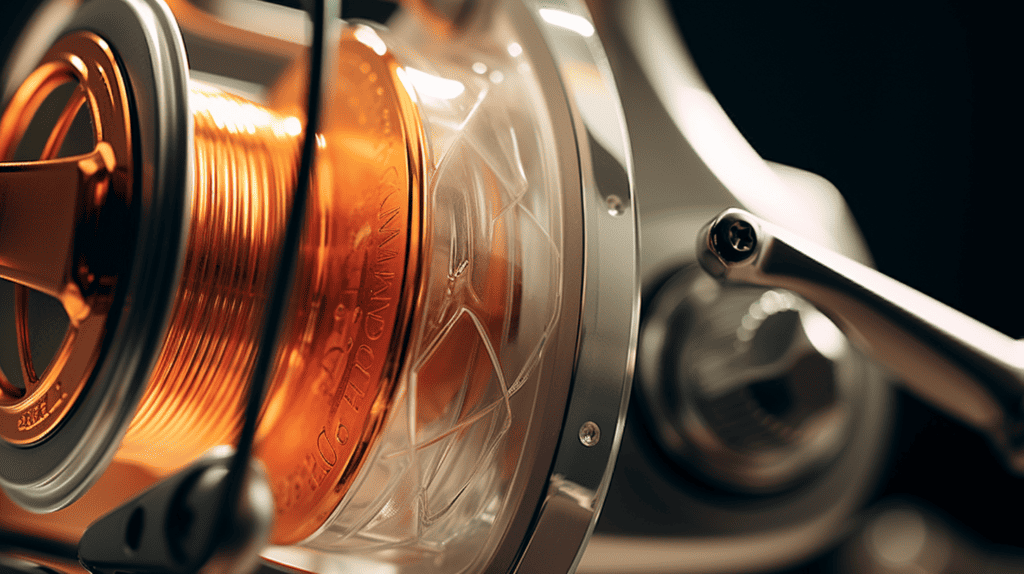
Review of Shimano Sojourn Casting Rod
I recently had the opportunity to try out the Shimano Sojourn Casting Rod, and I must say, I was impressed. This rod has a sturdy construction that feels solid in your hands. The grip is comfortable, allowing for hours of fishing without any discomfort.
What really stood out to me was the price point of this rod. It’s an affordable option compared to some of the more expensive rods on the market, making it accessible to anglers who are on a budget.
Shimano has also incorporated advanced technology into this rod to address common problems like twist during casting. This not only improves its performance but also enhances its functionality.
Review of Shimano Sojourn C Muskie Casting Rod
The Shimano Sojourn C Muskie Casting Rod is a great option for muskie fishing. It has double-foot guides and a wire frame tiptop, which make it durable and sturdy. The rod offers a custom look and has performance-minded features that anglers will appreciate.
Despite being no-frills, the Sojourn C Muskie Casting Rod is inexpensive without compromising on quality. It comes in different lengths and power ratings to suit your preferences. This heavy-duty rod can easily cast lighter weight lures, making it versatile for different fishing situations.
Overall, the Shimano Sojourn C Muskie Casting Rod is a reliable choice for any angler looking for a quality rod option at an affordable price.
Resources for Fishing Enthusiasts
Find the best fishing access maps, navigate the Montana fly fishing season, learn about popular fish species in the Yellowstone River, and get tips for tipping a fly fishing guide in Montana.
Explore fly fishing lessons and packages in Montana, check out the Stillwater River fishing report from 2019, discover places to eat on a Yellowstone River fishing vacation, and find must-have products at Stillwater Anglers Outfitters.
Plus, learn about essential fly fishing techniques and stay updated with the latest Yellowstone River fishing reports.
Finding the best fishing access maps
As a fishing enthusiast, one of the key resources you need is a reliable fishing access map. These maps provide important information such as structures, vegetation, depth contours, and access points for various fishing spots.
One great tool to use is Fishidy maps, which not only give you access points but also provide details on Fishing Hot Spots®, navigational points, and even catches/spots shared by other anglers.
Another option is to utilize online GIS tools that allow you to find fishing spots based on data. Additionally, don’t forget about the trout fishing regulations booklet, which can be a helpful guide for finding specific fishing spots.
Navigating the Montana fly fishing season
Planning a fly fishing trip in Montana? Let me help you navigate the Montana fly fishing season. Montana Angler offers world-class fly fishing trips on legendary rivers, and one popular destination is Stillwater River.
With its excellent hatches, consistent conditions, and abundant variety during the summer season, it’s a must-visit for any angler. To make the most of your trip, be sure to check out the fishing access map for Stillwater River and familiarize yourself with fishing regulations in Montana.
Remember to pack appropriate gear, obtain necessary licenses, and consider weather conditions.for an enjoyable experience. Happy fishing!
Popular fish species in the Yellowstone River
In the Yellowstone River, there are several popular fish species that attract anglers. These include lake trout, brook trout, brown trout, rainbow trout, and channel catfish. These species have been introduced to the river and have thrived in its waters.
Lake trout is one of the largest fish species found in the Yellowstone River, along with channel catfish and rainbow trout. Anglers enjoy fishing for these fish as they provide a fun challenge and an opportunity for a great catch.
Fly fishing is particularly popular in this river, offering a unique experience for fishing enthusiasts. The Yellowstone River supports not only nonnative fish but also 12 species or subspecies of native fish like Arctic grayling, mountain whitefish, westslope cutthroat trout, and Yellowstone cutthroat trout.
Tips for tipping a fly fishing guide in Montana
Tipping a fly fishing guide in Montana is an important part of the sport. It’s customary and expected to tip your guide at the end of your trip. The amount you should tip can vary, but it’s generally recommended to give around 15-20% of the total cost of the trip.
You can choose to tip either at the end of each day or at the end of your entire trip. Tipping shows appreciation for your guide’s hard work and expertise in providing you with a memorable fishing experience.
Fly fishing lessons in Montana
If you want to learn how to fly fish in Montana, there are plenty of lessons available. These lessons can teach you all the basics of fly fishing and help you become a better angler.
You’ll learn about different types of flies, casting techniques, and how to read the water to find the best spots for catching fish. The instructors are experienced anglers who know all the ins and outs of fly fishing in Montana.
They can offer valuable tips and tricks that will improve your skills on the water. With fly fishing lessons in Montana, you’ll be well-prepared for a successful day on the river!
2020 Montana fly fishing packages
If you’re planning a fly fishing trip to Montana this year, you’ll be happy to know that there are plenty of great packages available. Whether you’re looking for guided trips on the Yellowstone River or exploring other rivers in Western Montana, there’s something for everyone.
The Western Montana Fly Fishing Resource Page is a great place to start your research, as it provides information on rivers, hatches, seasons, fishing reports, and streamflow. Additionally, the Montana Department of Fish, Wildlife, and Parks offers valuable insights into the state’s fishery resources and fishing opportunities.
And with this winter being snowy but mild in Montana, you can enjoy fly fishing all year round. So don’t miss out on these fantastic 2020 fly fishing packages in Montana!
Stillwater River fishing report 2019 year in review
In 2019, the Stillwater River fishing conditions went through some changes. The month of June brought warmer weather and increased flows due to rain events. Montana Angler Fly Fishing provided a comprehensive fishing report, giving updates on water levels, recommended fly selection, and overall fishing conditions.
However, as of June 11, 2021, the Stillwater River was experiencing high flows and was not recommended for fishing until the water levels dropped. When planning your next fishing trip to the Stillwater River or checking for current conditions, be sure to refer to reliable sources like the Montana Angler Fly Fishing website for up-to-date information.
Places to eat on a Yellowstone River fishing vacation
When you’re on a Yellowstone River fishing vacation, there are plenty of places to eat that will satisfy your hunger after a day spent on the water. You can find delicious meals at various restaurants and cafes in the nearby towns.
From casual diners and burger joints to upscale eateries, there’s something for everyone. Try local Montana cuisine or indulge in comfort foods like burgers, sandwiches, and pizza.
Don’t forget to sample the fresh seafood options too! So whether you want a quick bite or a leisurely meal, you’ll have no trouble finding great places to eat during your Yellowstone River fishing adventure.
Must-have products for Stillwater Anglers Outfitters
As a fishing enthusiast, I know how important it is to have the right gear for a successful fishing trip. When it comes to Stillwater Anglers Outfitters, they offer a range of must-have products that every angler should consider.
They stock high-quality brands like Simms® and Scientific Anglers, ensuring that you are getting reliable and durable equipment. Whether you need fishing rods, reels, lines, lures, or accessories, Stillwater Anglers has got you covered.
Their practical products are designed specifically for fly fishing enthusiasts like us. So if you want to enhance your fishing experience and increase your chances of success on the water, be sure to check out their selection of must-have products.
Amenities for a Stillwater fly fishing trip
For a great Stillwater fly fishing trip, there are some important amenities to consider. First, you’ll want to have the right watercraft, like a boat, kayak, canoe or float tube. This will allow you to explore different areas and reach the best fishing spots.
Don’t forget to bring along a personal flotation device (PFD) for safety.
Having the right gear is also crucial. Make sure you have a decent net for landing fish and a good selection of flies for different conditions. Fly selection is key when it comes to enticing trout in still waters.
Essential fly fishing techniques
When it comes to fly fishing, there are a few essential techniques that every angler should learn. First, it’s important to master the art of fly casting. This involves using a specific technique to cast your line and fly onto the water.
By practicing your casting skills, you can increase your accuracy and distance.
Another important technique is nymph fishing. Nymphs are underwater insects that fish like to eat, so learning how to imitate them with your flies can lead to more bites. You’ll want to pay attention to the water’s current and depth when nymph fishing.
Water reading is also crucial in fly fishing. By observing the water’s movement and structure, you can determine where fish are likely hiding or feeding. This helps you choose the best areas of the river or lake to focus on.
Yellowstone River fishing report updates
Fishing on the Yellowstone River has been exciting lately. The river’s water levels have significantly increased from 2000 cfs to about 7500 cfs in May 2020. This rise was due to favorable spring weather, making it an ideal time for fishing enthusiasts to cast their lines.
With over 700 miles of stretch, the Yellowstone River offers plenty of opportunities for fishing adventures. However, it’s important to note that most parts of the river are bordered by private land, so accessing certain areas may require permission or utilizing designated access points.
When planning your fishing trip, consider using a drift boat or raft for fly fishing along this magnificent river. Stay updated with current Yellowstone River fishing reports to know about the latest conditions and make the most out of your angling experience!
Guided fishing trips in Montana
As a fishing enthusiast, you may be looking for the best guided fishing trips in Montana. Well, look no further! Montana Fishing Guides is your go-to fly fishing outfitter in the state.
With their expertise and knowledge, they offer customized fishing trips on the blue ribbon rivers of Montana. Whether you’re a beginner or an experienced angler, their professional guides will ensure that you have an unforgettable fishing experience.
From learning essential fly fishing techniques to increasing your catch rate, hiring a guide from Montana Fishing Guides is the best way to enhance your skills and make the most out of your fishing trip in Montana.
Essential fly fishing gear
When it comes to fly fishing, having the right gear is essential for success on the water. As a fishing enthusiast, I understand the importance of investing in quality equipment that will enhance your experience.
There are 12 essential items that every beginner should have in their fly fishing arsenal. These include a fly rod, reel, line, leader, tippet, flies, waders, boots, vest or pack, nippers or forceps for cutting line and removing hooks.
It’s important to choose a fly rod and reel that suits your needs and budget. When selecting flies, consider the species you’ll be targeting and match them accordingly. Remember to dress appropriately with waders and boots to stay comfortable while wading in the water.
Lastly, a good vest or pack will keep your gear organized and easily accessible as you explore different fishing spots.
Being able to read water is also crucial in fly fishing. Look for areas where fish are likely to be hiding such as riffles (shallow fast-moving water), pools (deeper calm areas), eddies (water flowing against an obstacle), and pockets (small depressions in the riverbed).
Benefits of Hiring a Fishing Guide
Hiring a fishing guide offers numerous benefits, including access to their expertise and knowledge, enhancing the overall fishing experience, and increasing your catch rate.
The expertise and knowledge of a guide
A fishing guide has valuable expertise and knowledge that can greatly enhance your fishing experience. They know the best fishing spots, understand fish behavior, and have skills to help you catch more fish.
By hiring a guide, you can save money on buying your own boat and gear while still enjoying a successful fishing trip. Their expertise also helps improve your learning curve, making you more confident in your abilities.
Investing in a fishing guide is like investing in reliable equipment – it increases your chances of success and ensures a memorable fishing adventure.
Enhancing the fishing experience
Hiring a fishing guide can greatly enhance your fishing experience. With the expertise and knowledge of a guide, you’ll be able to learn new techniques and improve your skills as a fisherman.
They can teach you the best fishing spots, help you navigate unfamiliar waters, and show you effective baiting and casting techniques. Fishing with a guide also allows you to connect with other fishermen who share your passion.
It’s not just about catching more fish, but also about enjoying the process and learning from an experienced mentor. So if you want to take your fishing game to the next level, consider hiring a fishing guide for an unforgettable experience on the water.
Increase in catch rate
Hiring a fishing guide can greatly increase your chances of catching fish. They have the expertise and knowledge to help you find the best spots and use the right techniques. With their guidance, you can improve your skills and success rate when it comes to bass fishing.
Hiring a professional fishing guide is worth considering because it outweighs any potential disadvantages. So if you want to improve your catch rate and have an unforgettable fishing experience, hiring a fishing guide is definitely a smart choice.
Conclusion on Fishing Myths Debunked
In this article, we’ve debunked some common fishing myths and provided helpful tips for success. Remember, talking doesn’t scare fish, and big fish can bite small bait too. Don’t avoid fishing in the rain, and bananas don’t bring bad luck! Use the right bait, hook size, and understand fish behavior for a successful trip.
Stay safe on the water and learn how to properly catch-and-release fish. Explore new innovations in fishing gear and find resources for your fishing adventures. Consider hiring a guide to enhance your experience.
Happy fishing!
References
Here are some references to help you further explore fishing and debunking fishing myths:
– “The Total Fishing Manual: 317 Essential Fishing Skills” by Joe Cermele
– “Fishing for Dummies” by Peter Kaminsky and Greg Schwipps
– “Debunked! Fakes, Frauds, and Falsehoods in the World of Science” by Richard Roeper
– “Fish Behavior: Why Fish Behave the Way They Do” by Thomas L. Kennedy.
– “Fly Fishing for Beginners: A Comprehensive Guide to Learning Fly Fishing Techniques for Trout!” by Tom Johnson
Remember to always fact-check information before believing common fishing myths. Happy fishing!
FAQs on Fishing Myths Debunked
1. Can I catch more fish by using specific fishing techniques or gear?
While certain techniques and gear may increase your chances of catching fish, it is important to understand that success in fishing depends on various factors such as location, weather conditions, and the behavior of the fish.
2. Are there any secret spots where I can always find a lot of fish?
There are no guaranteed secret spots for finding a lot of fish as their locations can change based on factors like seasons and water conditions. It’s best to research and explore different areas to increase your chances of finding fish.
3. Is it true that bigger bait always catches bigger fish?
The size of the bait does not guarantee catching bigger fish. While some larger species may prefer bigger prey, different types of bait attract different species depending on their feeding habits. It’s important to use bait appropriate for the target species you want to catch.
4. Should I only go fishing during specific times or seasons for better results?
Fishing can be successful at any time or season depending on the type of fish you want to catch. Some species may be more active during specific times or seasons due to feeding patterns or breeding behaviors, so it’s helpful to research the habits of your target species.
5. Do expensive fishing equipment always lead to more successful catches?
Expensive equipment doesn’t guarantee more successful catches as skill, knowledge, and technique play significant roles in fishing success. While quality gear can enhance performance and durability, it’s not necessary for beginners or casual fishermen who prioritize enjoyment over competition.

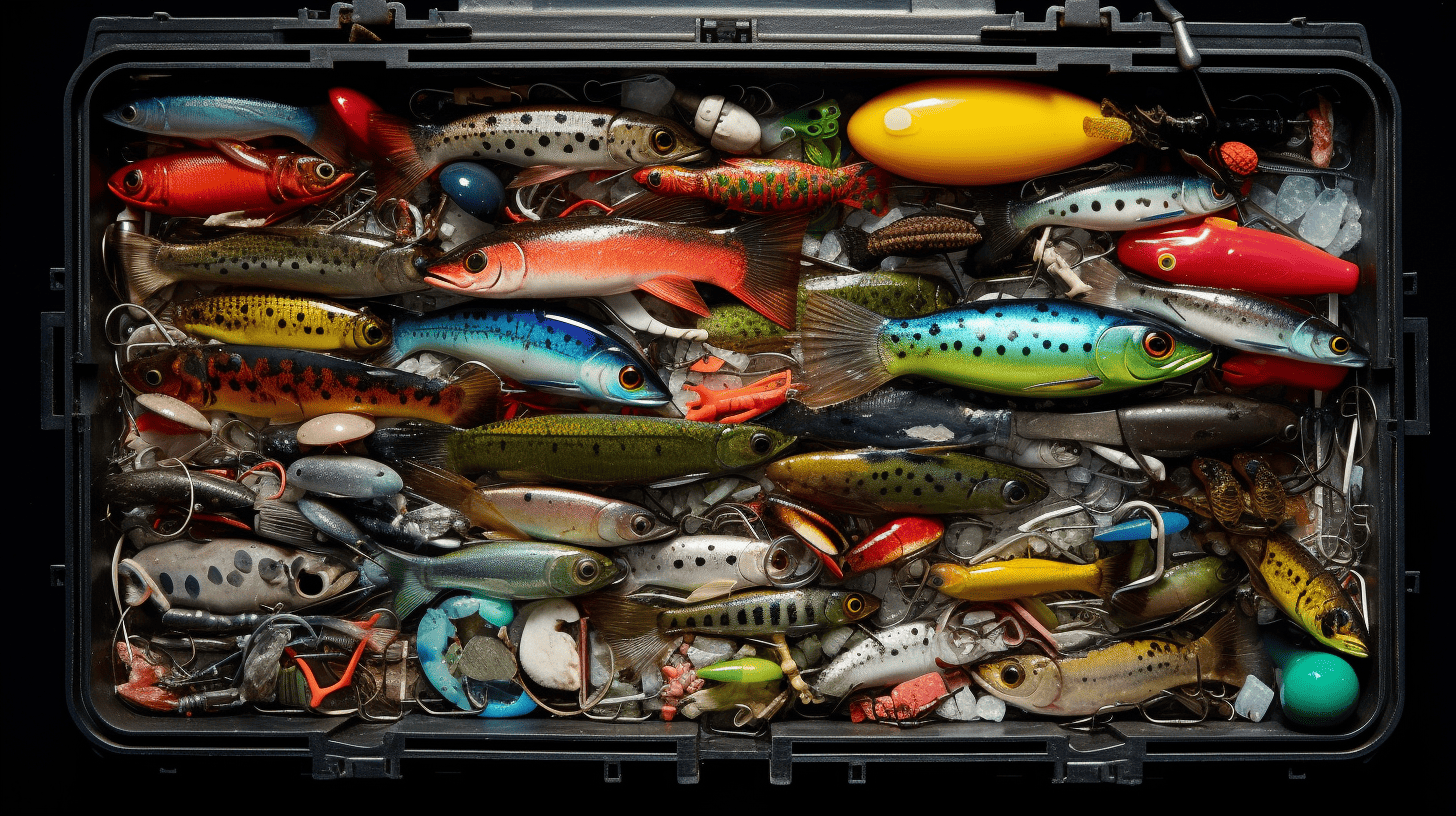
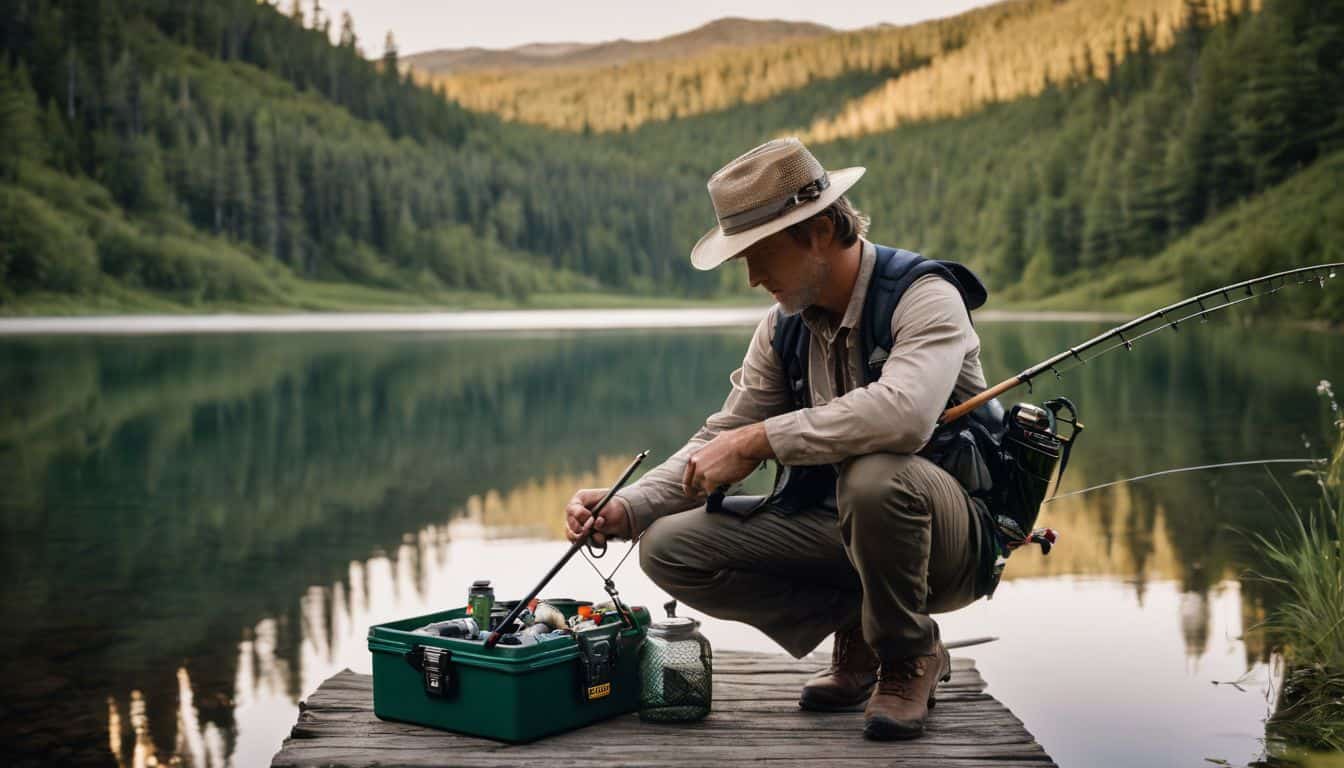
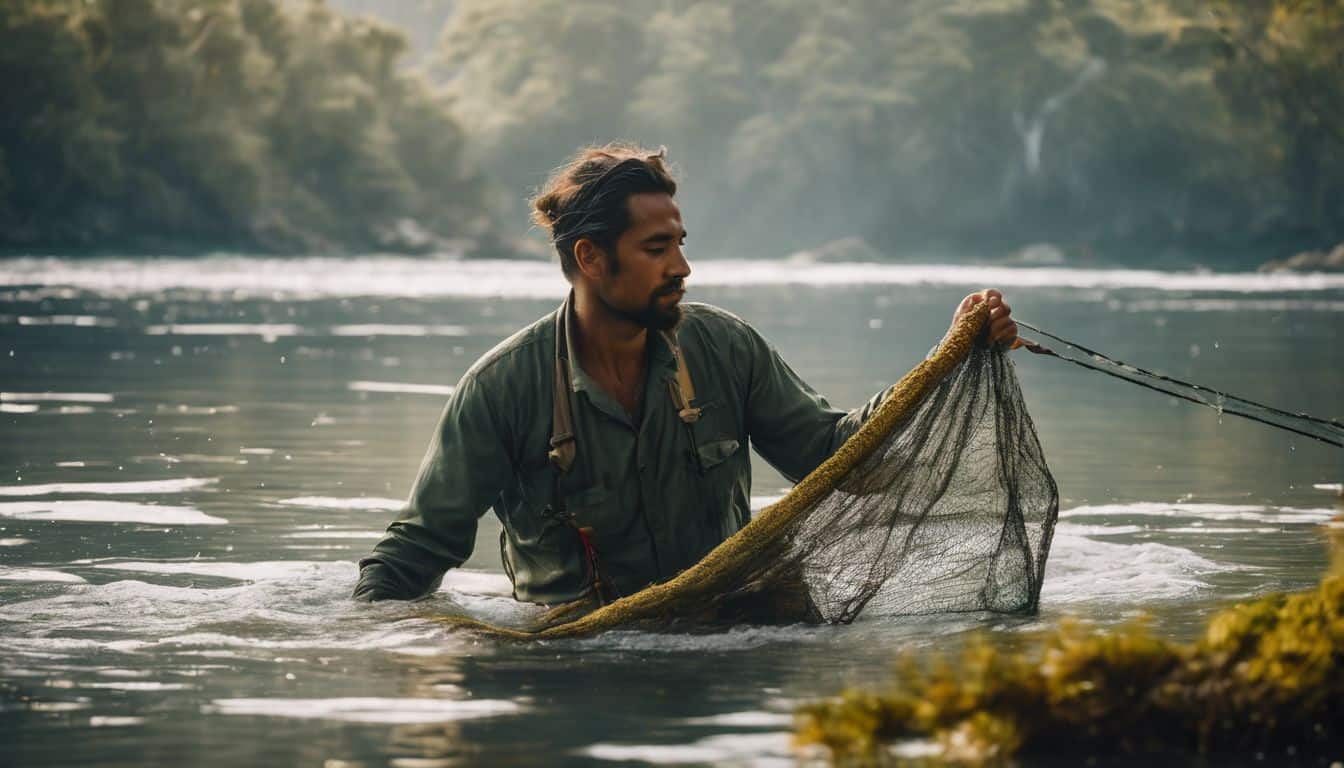
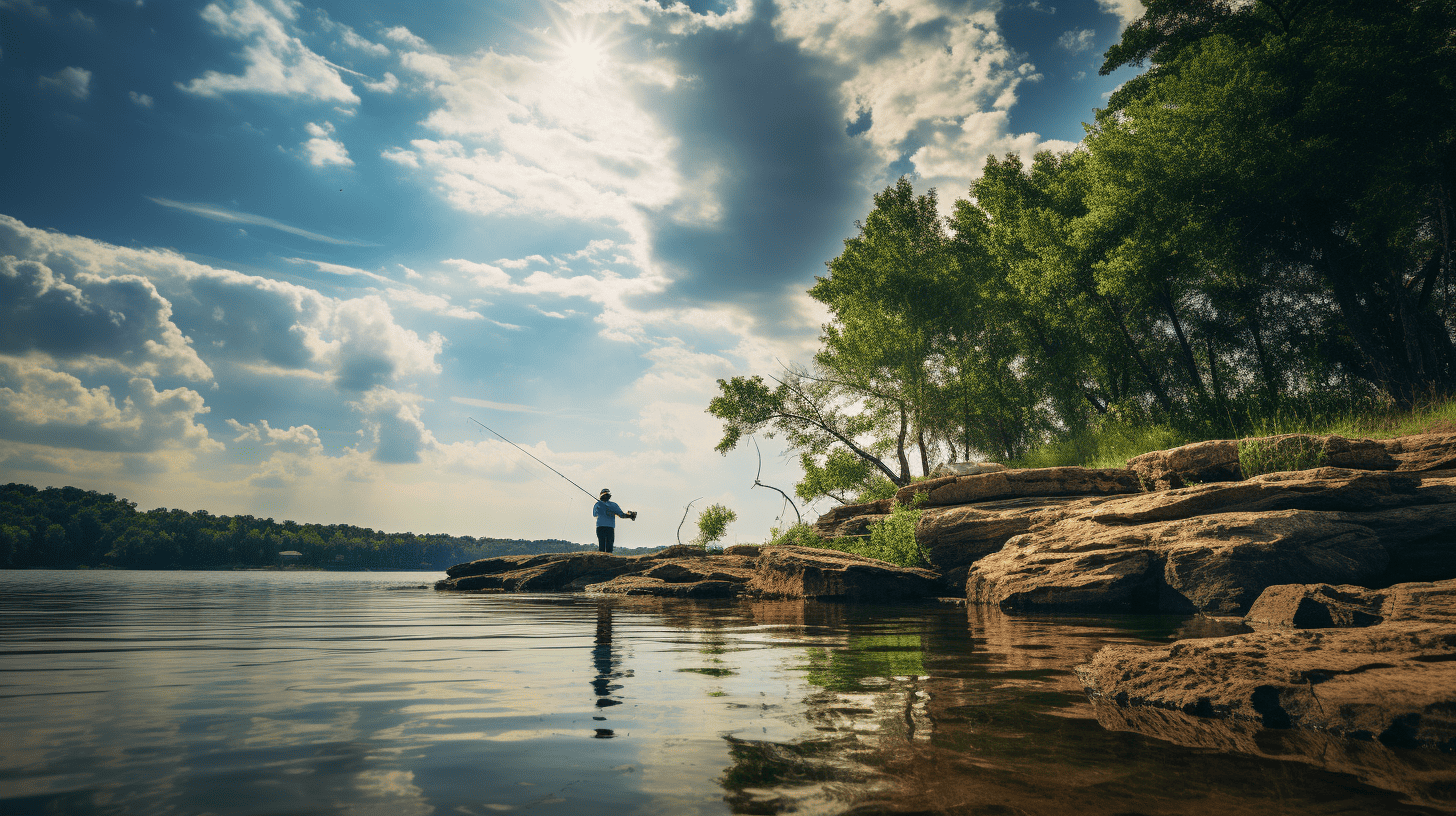
Leave a Reply